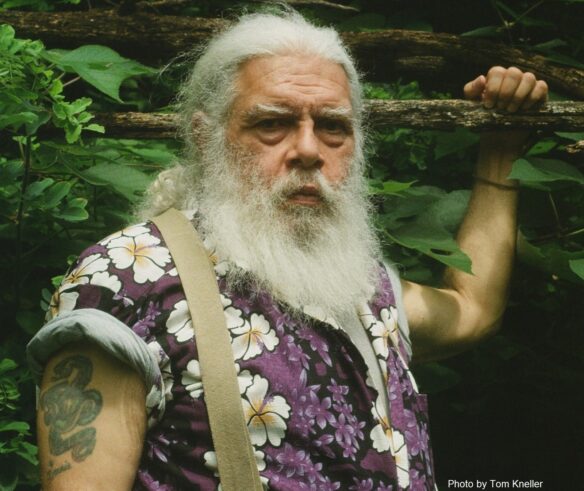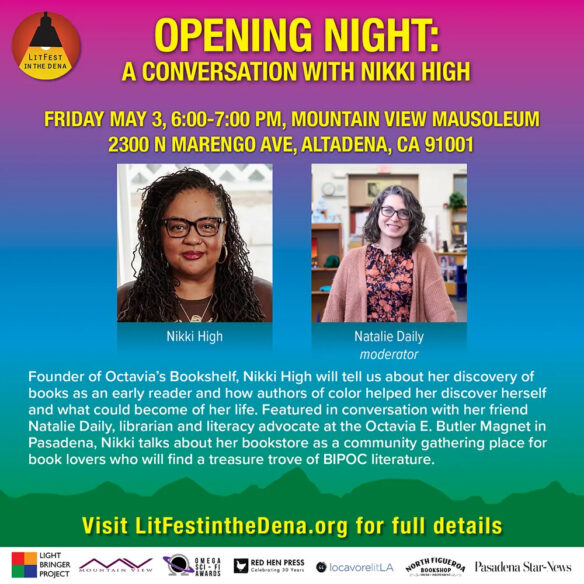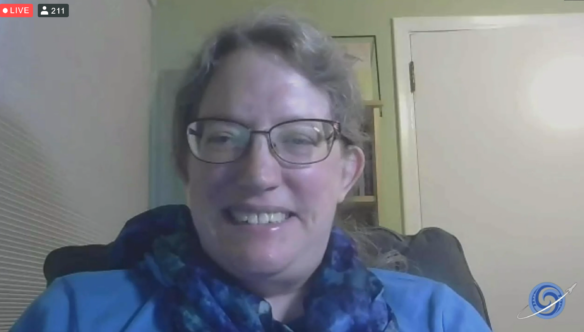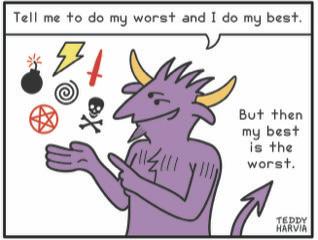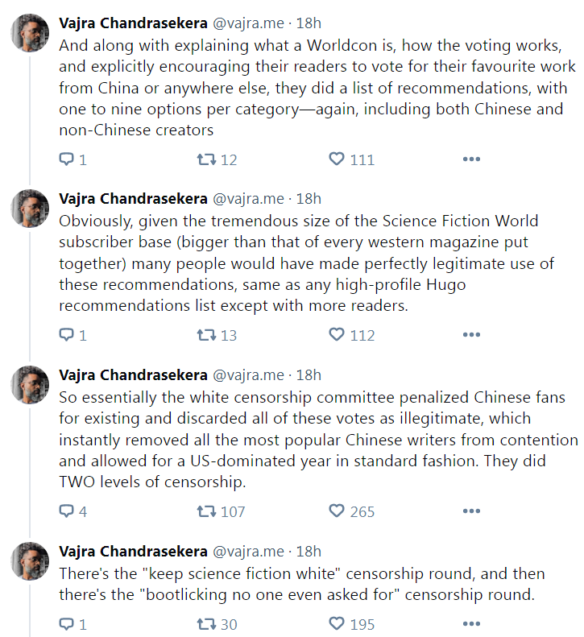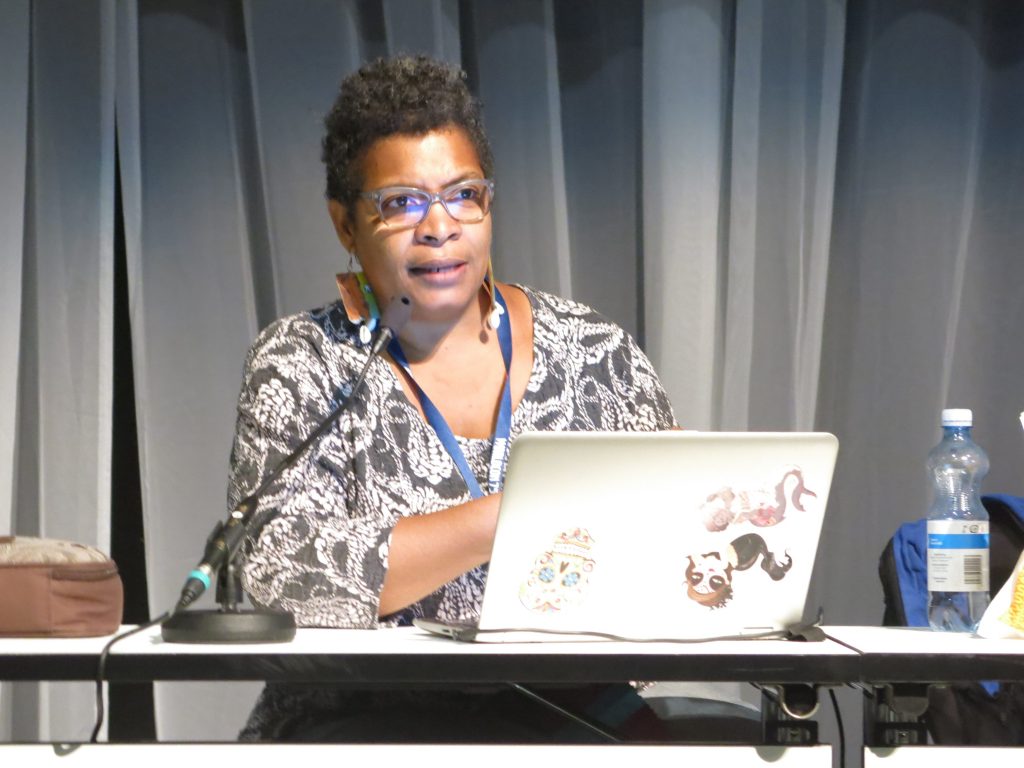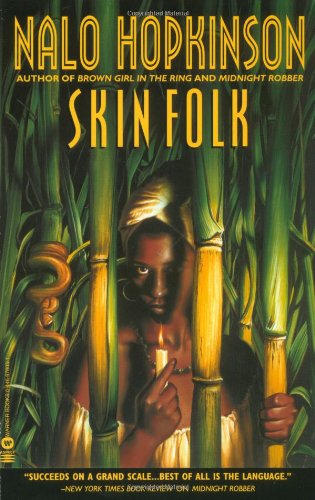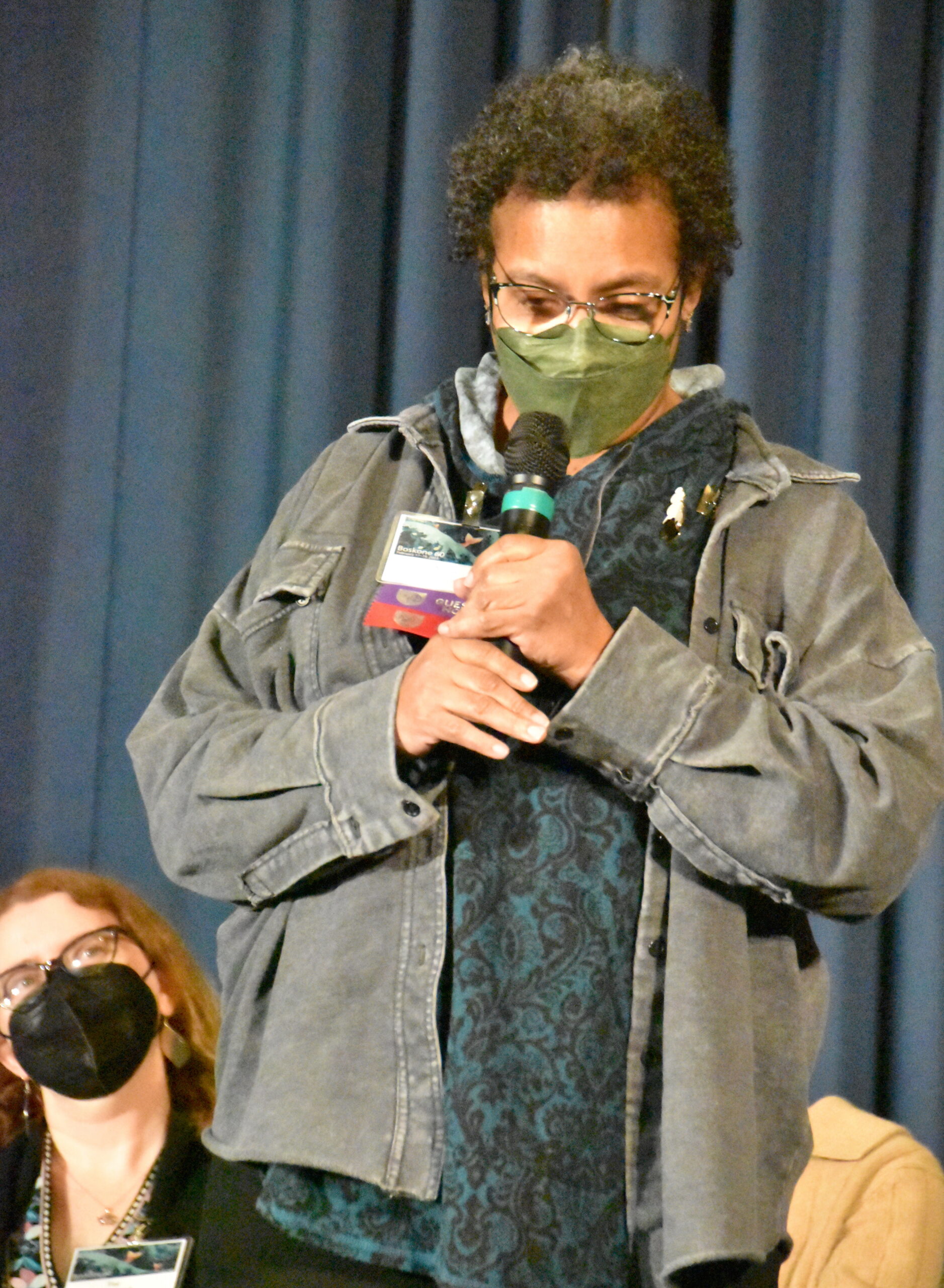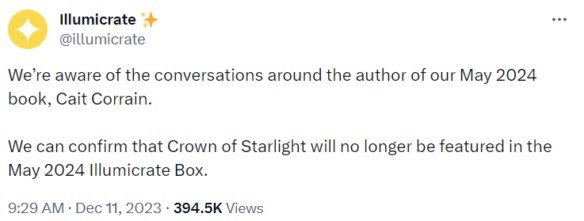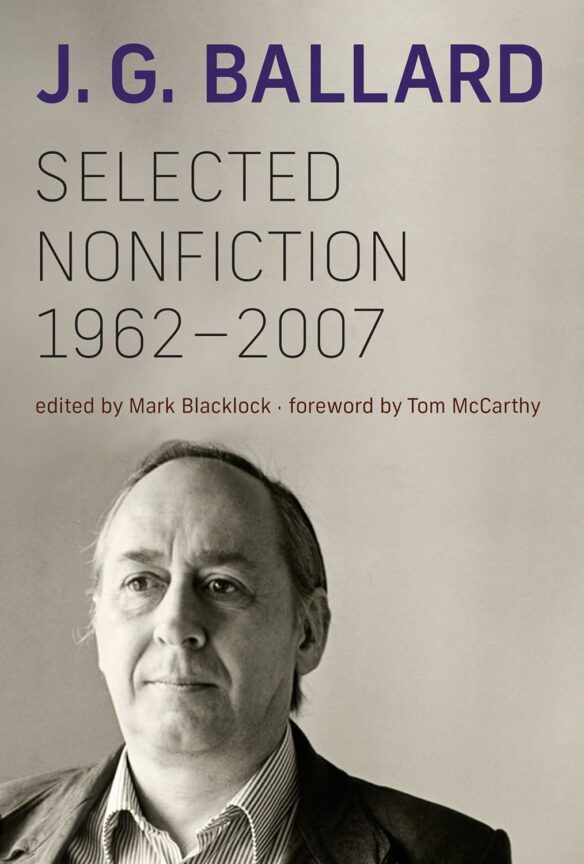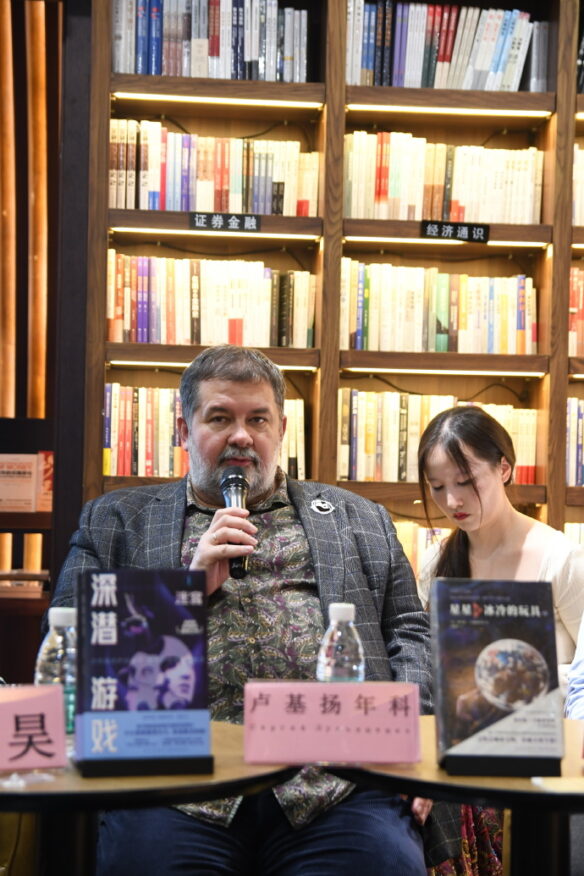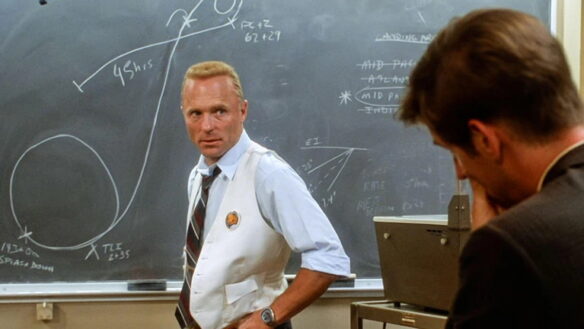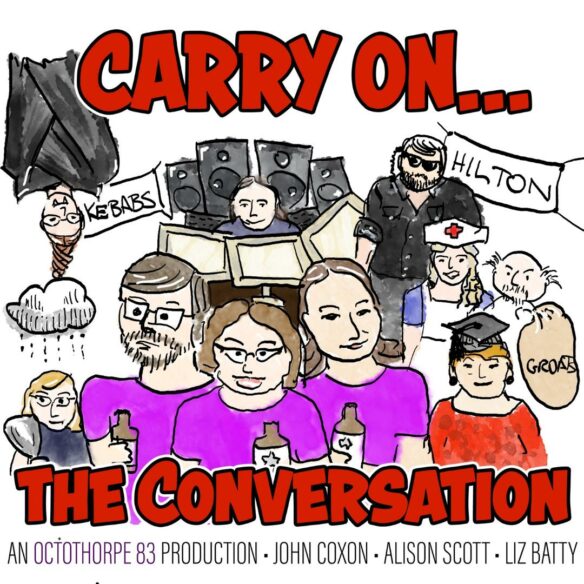(1) NOBEL PRIZE IN LITERATURE. Korean author Han Kang wins 2024 Nobel Prize in Literature reports Publishers Weekly. (There are no genre elements present in the descriptions of Han Kang’s work in “What to read: Han Kang” at NobelPrize.org, or in the “Han Kang” Wikipedia article.)

…One of only 18 women to be awarded global literature’s highest honor, she is the first South Korean writer to win the prize and the first Asian laureate since 2012, when the Nobel was awarded to Chinese author Mo Yan.
“Han Kang’s visible empathy for the vulnerable, often female lives, is palpable, and reinforced by her metaphorically charged prose,” said Anders Olsson, chairman of the Nobel Committee at the Swedish Academy, the body that administers the prize. “In her oeuvre,” he added, quoting from the Committee’s citation, “Han Kang confronts historical traumas and invisible sets of rules and, in each of her works, exposes the fragility of human life. She has a unique awareness of the connections between body and soul, the living and the dead, and in her poetic and experimental style has become an innovator in contemporary prose.”…
(2) FORMER FRAZETTA HOME IN FLORIDA UNHARMED BY STORM. Frank Frazetta’s daughter reassured fans that the Frazetta Art Gallery in Boca Raton, FL was undamaged by Hurricane Helene. (This is not the Frazetta Art Museum which is in Pennsylvania.)
This paragraph distinguishes the Frazetta Art Gallery from the Museum:
…For Frazetta fans, it’s an essential destination, since it contains dozens of pieces of Frazetta artwork, paintings, newspaper strips, comic book pages, and a nice selection of personal artwork Frazetta executed as gifts for his wife, Ellie, and other family members. The personal work on display gives viewers a true feeling of intimacy, of being part of Frazetta’s inner circle, since most of them have never been reprinted….
(3) ELECTORIAL. [Item by SF Concatenation’s Jonathan Cowie.] A few years ago, because of the Sad Puppies Affair (which, contrary to popular belief, was not a Man From U.N.C.L.E. episode), there was much debate in fandom as to how we vote on the Hugo short-list. Now, better late than never, this week’s edition of Nature has an article on electoral systems, “Which Is The Fairest Electoral System?”
Scientists hope to explore whether some approaches are more likely to promote democratic resilience or to stave off corrosive partisanship. Such answers might inform policy, but differences in interpretation are inevitable when it comes to politics. “Democracy is a complex system,” says Lee Drutman, a political-science researcher at New America, a think tank in Washington DC. There can be multiple ways to parse the data, he says.
A Hugo-type system is briefly mentioned…
There are sub-variants in FPTP (first past the post) systems: ranked-choice voting, which is used, for instance, in Australia, ensures a majority winner. Voters rank all candidates or parties; the lowest-ranked candidate drops out and their supporters’ second-choice preferences are tallied, and so on until a single candidate surpasses a 50% threshold. And run-off elections, such as those in France, when the two leading parties are voted for in a second round, ensure a direct national face-off.
Interestingly the piece has two conclusions. One that ranked choice has benefits, but a contrary view 2) is that this pushes folk to limited options. Here the article calls for more political parties in the US rather than the two big ones. In Hugo terms this would translate as increasing the number in the short-lists.
(By the way, personally I have no preference: I just share out of interest and am not advocating anything.)
(4) OCTOTHORPE. In episode 120 of the Octothorpe podcast, “Activate Liz” —
We do rather fewer letters of comment than last episode, and then we let Liz do her favourite topic of all: STATISTICS.
Listen here: Octothorpe (Podbean.com). Read the unedited transcript of the episode here.

(5) ATWOOD PICKS A CARD. Margaret Atwood appeared on NPR to publicize her new collection called, Paper Boat: New And Selected Poems: 1961-2023. They played clips of her answers to questions on the Wild Card program. “Writer Margaret Atwood plays a game of ‘Wild Card’”.
MARTIN: When I asked the question [about envy], though, you asked for a definition – envy that you suffered or had to manage or other people’s envy of you?
ATWOOD: Yes.
MARTIN: Is that – does that happen a lot?
ATWOOD: It has, certainly. Yeah. So what I said to young writers who had had a sudden success, I said, within a couple of years, you will have three nasty, vicious personal attacks from people you don’t know.
MARTIN: What were the attacks that were leveled at you in your first couple years of success?
ATWOOD: (Laughter) Some of them were quite funny. So a lot of it had to do with hair – Medusa hair, frizzy hair, you know, name something about hair. Yes, and one of them wrote a satirical fairy tale in which I bit the heads off men and made them into a pile and turned into an octopus. Figure that out.
MARTIN: So you were a Medusa-haired man hater.
ATWOOD: Yeah. And power mad, ladder-climbing…
MARTIN: Oh, power mad?
ATWOOD: Yes. Power-mad, ladder-climbing witch.
MARTIN: Oh, wow. I mean, that’s evocative.
ATWOOD: I thought so too.
(6) REMEMBERING J.G. BALLARD. “Diary: Deborah Levy on J. G. Ballard” at Book Post.
J. G. Ballard, England’s greatest literary futurist, changed the coordinates of reality in British fiction and took his faithful readers on a wild intellectual ride. He never restored moral order to the proceedings in his fiction because he did not believe we really wanted it. Whatever it was that Ballard next imagined for us, however unfamiliar, we knew we were in safe hands because he understood “the need to construct a dramatically coherent narrative space.”
When it came to anything by Ballard, genre really did not matter to me; his fiction could have been filed under “Tales of Alien Abduction” or “Marsh Plants” and I would have hunted it down. Despite our difference in generation, gender, and literary purpose, it was clear to me that he and I were both working with some of the same aesthetic influences: film, surrealist art and poetry, Freud’s avant-garde theories of the unconscious….
…The reach of his imagination was never going to fit with the realist literary mainstream but I was always encouraged by his insistence that he was an imaginative writer.
“I believe in the power of the imagination to remake the world, to release the truth within us, to hold back the night, to transcend death, to charm motorways, to ingratiate ourselves with birds, to enlist the confidences of madmen.”Good on you, Jim.
His highly imagined landscapes and abandoned aircraft and stopped clocks and desert sand were located in his head—and anyway he preferred driving fast cars to walking. He once sent me a photograph of the Heathrow Hilton and told me it was his spiritual home. …
(7) BUSTED. Was Chuck Tingle’s “true identity” revealed today? That’s what author C.J. Leede was hoping we’d think, til you-know-who caught them in the act.
(8) THOU SHALT NOT PASS. “The Editors Protecting Wikipedia from AI Hoaxes” — an excerpt from a 404 Media’s post.
A group of Wikipedia editors have formed WikiProject AI Cleanup, “a collaboration to combat the increasing problem of unsourced, poorly-written AI-generated content on Wikipedia.”
The group’s goal is to protect one of the world’s largest repositories of information from the same kind of misleading AI-generated information that has plagued Google search results, books sold on Amazon, and academic journals.
“A few of us had noticed the prevalence of unnatural writing that showed clear signs of being AI-generated, and we managed to replicate similar ‘styles’ using ChatGPT,” Ilyas Lebleu, a founding member of WikiProject AI Cleanup, told me in an email. “Discovering some common AI catchphrases allowed us to quickly spot some of the most egregious examples of generated articles, which we quickly wanted to formalize into an organized project to compile our findings and techniques.”…
(9) SIMULTANEOUS TIMES. Space Cowboys Books presents episode79 of the “Simultaneous Times” podcast with Pedro Iniguez, Lisa E Black, and Addison Smith.
- “Sneeze” by Pedro Iniguez. (Music by Phog Masheeen. Read by Jean-Paul L. Garnier)
- “Of Course I Still Love You” by Lisa E Black. (Music by Phog Masheeen. Read by the author.)
- “Residual Traces” by Addison Smith. (Music by Fall Precauxions. Read by Jean-Paul L. Garnier.)
- Theme music by Dain Luscombe.
Simultaneous Times is a monthly science fiction podcast produced by Space Cowboy Books in Joshua Tree, CA.

(10) MEMORY LANE.
[Written by Paul Weimer.]
Anniversary: Barbarella film (1968)
Oh, Barbarella.
I didn’t quite get why it was so controversial when I first saw it, it was a bowdlerized version of the already bowdlerized version Barbarella: Queen of the Galaxy. This was on a local channel in New York City in the 1980’s. I thought it was a funny but rather goofy looking SF movie, although of course Jane Fonda was something to look at.
(My father was upset at her being in the movie, something I did not understand for years until I understood her politics…and my own family’s politics, better)
I finally got to see the uncut and real version in the early 2000’s on DVD. And then I could finally see what I was missing. Did it add a lot to the actual movie besides the visuals? No, but what visuals! I slotted it in the same space as Woody Allen’s Sleeper, as a science fiction movie that talked about sex, and around sex, a lot. But going on the other visuals, the sets, costume design and props (including the infamous Excess Pleasure Machine) were just mind boggling in both of the versions I’ve seen. Too, the actual cinematography is mesmerizing, the camera knows where to linger, where to bring our attention in sometimes rather chaotic and baroque set pieces. I have not yet seen a 4k version of the film, but that is something I do very much need to see sometime, to see it at the maximum fidelity and clarity.
Is it great cinema? No. But it is great art.

(11) COMICS SECTION.
- Off the Mark displays yet another credential trap.
- Carpe Diem shows a failed invasion.
(12) DEADPOOL AND WOLVERINE COMICS REUNION. “Deadpool and Wolverine officially return in 2025, Marvel confirms” – GamingBible has the story.
…For those who miss the bromance between Marvel’s Deadpool and Wolverine, you’re in luck because the pair are officially returning in 2025.
Their antics won’t play out on the big screen but upon the pages of comics instead.
The Deadpool/Wolverine series comes from writer Benjamin Percy and artist Joshua Cassara. This partnership, much like Deadpool and Wolverine, is a match made in heaven.
Fans who enjoyed the bloody violence of the film needn’t worry that the comics will strip that action away…
(13) BEGINNING OF A FASCINATION. CrimeRead’s Jeremy Dauber outlines “A Brief History of the Rise of Horror in 19th Century America”.
At the Civil War’s end, under a quarter of Americans lived in cities; by the end of the Great War, the proportion was almost exactly half. All those people moving to the cities—both from rural America and from abroad— changed things. Size created anonymity, the possibility of losing yourself in the crowds, remaking yourself, if you so chose. . . . or getting lost, and not always by your choice. Increasingly, the streets were lit by electric light, and the machines inside them were powered the same way; but that simply swapped a new set of shadows and terrors for the old ones. The horrors of the next decades were, all too frequently, industrial and mass-produced: whether they came from the chatter of guns or the whirr of a film projector, they cast an eye on progress, and murmured about what lay beneath.
Start, perhaps, with that newly electrified white city, Chicago. In 1893, its World’s Columbian Exposition, or World’s Fair, was an announcement of America’s newly flexing muscles: its willingness to be broad-shouldered, to play a leadership role in world affairs, to stride into the future. And yet, inside the city limits, there sat a haunted castle. This castle, though, had no clanking chains, no Gothic ghost or Salem witch; it had a psychopath who used modern tools—the soundproofed room, the knockout gas-bearing pipes, and of course, the three-thousand-degrees-Fahrenheit kiln—to disable, kill, and dispose of guests who checked into his World’s Fair Hotel at 701 Sixty-third Street. And why did H. H. Holmes do it? For his part, when eventually caught, he had a simple, and chillingly modern, explanation: “I was born with the devil in me. I could not help the fact that I was a murderer, no more than the poet can help the inspiration to sing.”…
(14) I DO SOLEMNLY SWEAR. SFFAudio reminds us that once upon a time Robert Bloch urged authors to swear to uphold “ROBERT BLOCH’S CREDO FOR FANTASY WRITERS”.
(15) JUSTWATCH MARKET SHARE REPORT. As the third quarter of 2024 comes to an end, JustWatch has released their latest data report on market shares in the US. As usual, they based our report on the 13 million JustWatch users in the US selecting their streaming services, clicking out to streaming offers and marking titles as seen.
SVOD market shares in Q3 2024
Global streaming giant: Prime Video managed to keep its first-place rank, with a 1% lead against Netflix. Meanwhile, Max is managing to stay ahead of major competitors Disney+ and Hulu.

Market share development in 2024
Disney+ and Hulu both gained momentum with a +1% subscriber boost by September. While Netflix and Max stumbled with a -1% decline each, revealing a shake-up in the streaming rivalry.

(16) IF YOU INSIST ON WATCHING. “Too Scared to Watch Horror Movies? These 5 Tips May Help” says the New York Times (paywalled).
The October ritual of watching horror movies in the lead-up to Halloween can be exhilarating. Unless, of course, you can’t quite stomach the gory and gruesome, or even the spooky and spine-tingling….
…If you’re someone who wants to indulge in the season but dreads jump scares and buckets of blood, here are five tips that could help even the biggest scaredy cats among us start to open up to the world of horror.
The first two tips are:
Embrace the Spoiler
The first and best line of defense is to read the plot in advance. If you’re feeling brave, go for just a synopsis, but there’s no reason to be a hero. I sometimes read an entire plot in great detail before watching, especially with films I know will tap into my weak spot: movies about demonic possession. Unlike with other genres, knowing what will happen in horror doesn’t necessarily detract from the experience of watching. Your heart will most likely still pound. You will probably still jump. And the visuals and sounds will probably still shock. Knowing what comes next may simply help keep the anxiety and uncertainty in check.
The Smaller, the Better
Nothing against the big-screen experience, but going small, by watching on your phone or a tablet, can go a long way. Not only will you have a sense of control that a crowded theater with speakers blaring hellish soundscapes can’t provide, you will also be able to make adjustments. If it gets too loud or chaotic, turn down the volume. If it gets too visually scary, turn down the brightness or flip the device down. Sometimes for the most intense scenes, it’s better to just hear the movie without seeing it, or to watch without sound….
(17) QUITE A TAIL. And for your viewing pleasure, The Copenhagen Post recommends “Reptilicus”.
Next time you’re looking for a Danish film to watch, spare a thought for Denmark’s only giant monster film ‘Reptilicus’ – a 1960s cult-classic with puppets, bad acting, bazookas, and a prehistoric reptilian beast rampaging through Amager…
… Reptilicus is the name for two monster films about a giant, prehistoric reptile which decides to attack Denmark.
Shot simultaneously, one film is in Danish (1961) and the other is from the USA in English (1962). Both films have a near identical cast (except for one actress) and two directors (Poul Bang – Danish, and Sidney Pink – English) who took turns throughout each shooting day to create two of the most iconic, kitsch and downright unintentional masterpieces to grace Danish screens.
The plot tells of a Danish miner in Lapland who accidentally digs up a section of a giant reptile’s tail from the frozen ground. The section is flown to the Denmark’s Aquarium in Copenhagen, where it is preserved in a temperature-controlled room for scientific study.
Of course they don’t put anyone competent in charge of monitoring it but instead choose a bumbling buffoon (the legendary Dirch Passer). The room is left open and the section begins to thaw and regenerate….
(18) FILLING UP WITH GAS. According to TechRadar, “Toyota’s portable hydrogen cartridges look like giant AA batteries – and could spell the end of lengthy EV charging”.
Toyota is showcasing a series of sustainable developments at the Japan Mobility Bizweek later this month – including its vision of a portable hydrogen cartridge future, which could apparently provide ‘swappable’ power for next-gen hydrogen fuel cell electric vehicles (FCEVs).
Originally a project of Toyota’s mobility technology subsidiary Woven (formerly Woven Planet), the team produced a working prototype of a hydrogen cartridge back in 2022 but has since developed the idea further… and appears to be running with it.The latest cartridges are lighter and easier to transport, with Toyota claiming the current iteration has been developed with the experience the company has gained in reducing the size and weight of the hydrogen tanks used in its fuel cell electric vehicles….
…Put simply, the cartridges would allow fuel cell electric vehicle drivers to swap out their power source when hydrogen levels run low, rather than having to refuel at a station like you typically would with a fossil fuel-powered car.
But Toyota also feels that these refillable and renewable cartridges could be used in a multitude of situations, such as to generate electricity in a fuel cell to power the home or even providing hydrogen to burn for cooking.
In fact, Toyota and the Rinnai Corporation are exhibiting a stove at Japan Mobility Bizweek that does just that. Similarly, in emergency situations, the hydrogen cartridge could be removed from the car and used to power any applicable device in the case of a blackout, for example….

[Thanks to Chris Barkley, Cat Eldridge, SF Concatenation’s Jonathan Cowie, Paul Weimer, Danny Sichel, Lise Andreasen, Steven French, Kathy Sullivan, Teddy Harvia, Mike Kennedy, Andrew Porter, and John King Tarpinian for some of these stories. Title credit belongs to File 770 contributing editor of the day Daniel “All Is Wells” Dern.]







